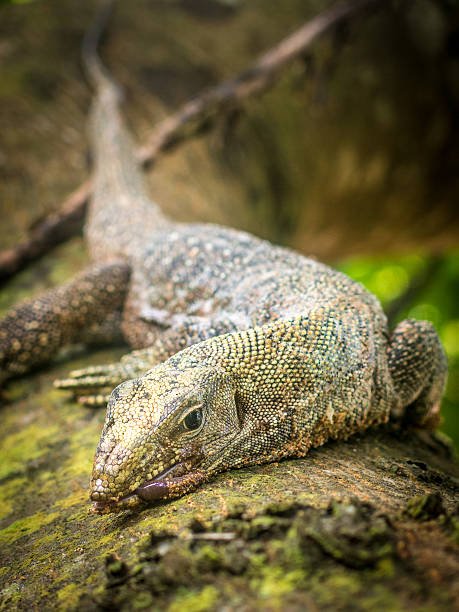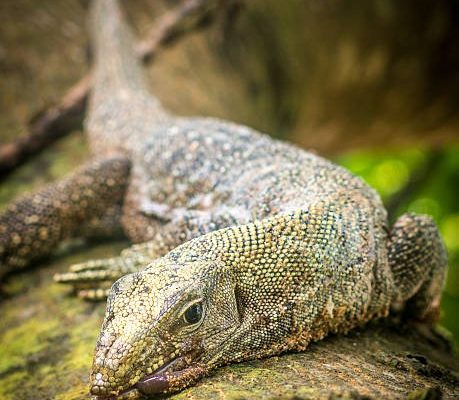
Now, let’s dive into the specifics of what monitor lizards eat and how they hunt their food. It’s like peeling back the layers of a story—understanding their diet isn’t just about what they consume; it’s also about how they interact with their surroundings. So grab a coffee and let’s explore the diet and hunting strategies of these remarkable reptiles.
What Do Monitor Lizards Eat?
Monitor lizards have a diverse diet that can change based on their habitat and species. They are primarily carnivorous, meaning they thrive on a meat-based diet. Most monitor lizards enjoy a buffet of small mammals, birds, and even insects. However, some species are a bit more adventurous and will munch on fruits, flowers, and even carrion when the opportunity arises.
For instance, the water monitor is known for its love of fish and amphibians. When it’s near a water source, you can find it diving or swimming to catch its meal. On the other hand, the savannah monitor is more of a terrestrial hunter. It prefers to scavenge the ground for rodents or small reptiles, showcasing its adaptability to different environments.
Understanding what these lizards eat gives us insight into their hunting methods. Their diets aren’t just random selections; they reflect their roles in the ecosystem as predators. It’s a circle of life thing—each species plays its part in keeping the environment balanced.
Hunting Techniques Used by Monitor Lizards
Monitor lizards are skilled hunters that use a combination of speed, stealth, and keen senses to catch their prey. You might be wondering how they manage to grab dinner while avoiding becoming dinner themselves. Well, here’s the thing: they’ve got some nifty tricks up their sleeves.
One primary tactic is ambush hunting. They often wait patiently, camouflaged among the leaves or rocks, until an unsuspecting animal comes into range. When the moment is right, they spring into action, using their powerful limbs and sharp claws to capture their target. Think of it like a cat pouncing on its prey—quick, calculated, and effective.
Additionally, monitor lizards are also known to use active hunting strategies. They can cover significant ground while searching for food. This involves exploring their habitat for signs of movement or activity. When they find something interesting, they rely on their exceptional vision and sense of smell to track and catch their prey.
Adaptations That Aid Their Hunting
Monitor lizards are not just good at hunting; they’ve evolved some pretty cool adaptations to help them thrive. For starters, their sharp claws make them excellent climbers. This ability allows them to escape from threats and access hard-to-reach food sources, like bird nests high in trees. It’s like having a built-in ladder!
Their forked tongues are another fascinating feature. Yes, they might look a little funny flicking that tongue in and out, but it serves a crucial purpose. Monitor lizards use their tongues to gather scent particles from the air, which helps them locate prey. Imagine being able to “taste” your surroundings; that’s how they hunt more effectively.
Lastly, let’s not forget about their strong jaws and serrated teeth. These powerful tools allow them to grip and tear through flesh easily. When they catch prey, they have the upper hand in a struggle, making sure their meal doesn’t escape. It’s a combination of sharp tools and clever techniques that sets them apart as efficient hunters.
Social Behaviors and Hunting
While monitor lizards are often thought of as solitary creatures, social dynamics can influence their hunting behavior. In some cases, they can be quite territorial. Male monitor lizards, in particular, will often establish a territory to ensure they have access to food resources. This means they might have to compete with other males, leading to some intense encounters.
Interestingly, monitor lizards can sometimes hunt in pairs or small groups, especially when targeting larger prey or when competing. You could say they’re like fishing buddies—just in this case, they’re all after the same catch. This collaboration can make them more successful hunters, as they can tackle larger animals that may be too difficult for a single lizard to manage.
However, if you see two monitors facing off, it’s not always friendly. They might engage in displays of aggression to establish dominance and scare off competitors. It’s all part of the survival game in the wild.
Impact of Habitat on Their Diet
The environment where monitor lizards live plays a massive role in shaping their diet. For example, those living in tropical areas often have access to a broader range of prey, including birds, amphibians, and insects. Conversely, those inhabiting drier regions may have to rely more on small mammals or carrion.
This connection between habitat and diet highlights how adaptable these reptiles are. In areas with fewer resources, monitor lizards may shift their diet to include more opportunistic food sources. It’s a survival instinct that showcases their ability to thrive within changing conditions.
For instance, during dry seasons in certain regions, monitor lizards will often travel greater distances to find food, showing that adaptability is key to their success. If food is scarce, they’ll become more exploratory and resourceful, ensuring they don’t go hungry.
Human Interaction and Conservation
As intelligent creatures, monitor lizards often find themselves in tricky situations due to human activities. Habitat destruction, pollution, and hunting can severely impact their populations. In many regions, they are considered vulnerable due to the loss of natural habitats and illegal wildlife trade.
Conservation efforts are essential to protect these amazing reptiles. Efforts like habitat preservation and creating protected areas help ensure monitor lizards can thrive in their natural environments. Additionally, raising awareness about their ecological role is crucial. People often overlook these reptiles, not realizing how important they are in controlling pest populations and maintaining the balance within their ecosystems.
If we want to enjoy the fascinating behaviors and hunting strategies of monitor lizards for generations to come, we need to take action today. Education and conservation can go hand in hand to help preserve these unique creatures and their habitats.
Final Thoughts
Monitor lizards truly are remarkable animals, with diets and hunting strategies finely tuned to their environments. Their ability to adapt, whether in terms of food choices or hunting techniques, makes them a fascinating subject of study. By understanding how they hunt, what they eat, and the challenges they face, we can better appreciate their role in the ecosystem.
So, the next time you think about monitor lizards, remember there’s a lot more going on beneath the surface. They’re not just cold-blooded reptiles; they’re masters of survival, showcasing the beauty and complexity of nature. Let’s keep the conversation going about these incredible creatures, and together, we can help ensure they continue to thrive on our planet.

